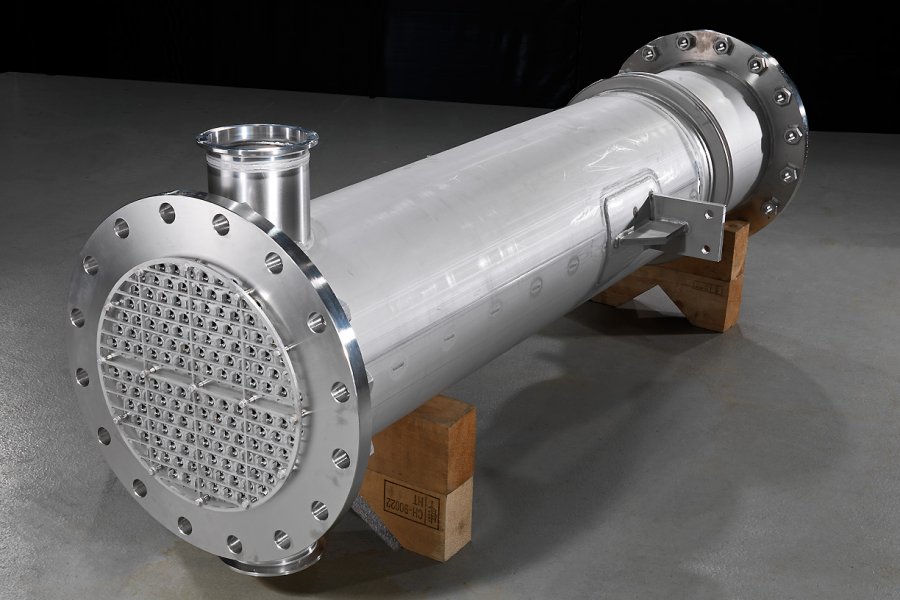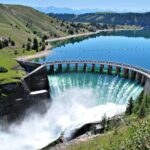Heat exchanger is a process equipment designed for the effective transfer of heat energy between two fluids. For theheat transfer to occur two fluids must be at different temperatures and they must come thermal contact. Heat exchange involve convection in each fluid and conduction through the separating wall. Heat can flow only from hotter to cooler fluids, as per the second law of thermodynamics

Heat exchangers can be classified into four types, according to
1. Nature of heat exchange process:
§ Direct contact heat exchanger: this is done by complete physical mixing of heat and mass transfer. Examples are water cooling towers and jet condensers in steam power plants.
§ Regenerator: here hot and cold fluids flows alternately when hot fluid passes, the heat is transferred to the solid matrix and then stopped the flow of hot fluid, next cold fluid is passed on the matrix which takes heat from solid matrix. Examples are Open hearth and blast furnaces.
§ Recuperator: the cold fluid flows simultaneously on either side of a separating wall. Examples are super heaters, condensers, economizers and air pre-heaters in steam power plants, automobile radiators.
2. Relative direction of motion of fluids:
According to flow of fluids, the heat exchangers are classified into three categories:
2.1 Parallel flow heat exchangers:
In parallel flow heat exchangers, both the tube side fluid and the shell side fluid flow in same direction. In this case, the two fluids enter the heat exchanger from the same end with a large temperature difference.
| S.No | Type | Major Characteristics | Applications |
| 1 | Shell and tube | Bundle of tubes encased in a cylinder shell | Always the first type of exchanger to consider |
| 2 | Air cooled heat exchanger | Rectangular tube bundles mounted on frame, with air used as the cooling medium | Economic where cost of cooling water is high |
| 3 | Double pipe | Pipe within a pipe; inner pipe may be finned or plain | For small units |
| 4 | Extended surface | Externally finned tube | Services where the outside tube resistance is appreciably greater then inside resistance. Also used in debottle necking existing units |
| 5 | Brazed plate fin | Series of plates separated by corrugated fins | Cryogenic services: all fluids must be clean |
| 6 | Spiral wound | Spirally wound tube coils within a shell | Cryogenic services: fluids must be clean |
| 11 | Barometric condenser | Direct contact of water and vapor | Where mutual solubilities of water and process fluid permit |
| 8 | Bayonet tube | Tube elements consists of an inner and tube | Useful for high temperature difference between shell and tube fluids |
| 7 | Scraped surface | Pipe within a pipe, with rotating blades scraping the inside wall of the inner pipe | Crystallization cooling applications |
| 9 | Falling film cooler | Vertical units using a the film of water in tubes | Special cooling applications |
| 12 | Cascade coolers | Cooling water flows over series of tubes | Special cooling applications for every corrosive process fluids |
| 13 | Impervious graphite | Constructed of graphite for corrosion protection | Used in very highly corrosive heat exchanger services |
| 10 | Worm coolers | Pipe coils submerged in a box of water | Emergency cooling |
2.2Counter flow heat exchangers:
In counter flow heat exchangers, the two fluids flow in opposite directions. Each of the fluids enter the heat exchanger from opposite ends. Because the cooler fluid exists the counter flow heat exchanger at the end where the hot fluid enters the heat exchanger, the cooler fluid will approach the inlet temperature of the hot fluid.
2.3 Cross flow heat exchangers:
In cross flow heat exchangers, one fluid flows through tubes and second fluid passes around the tubes perpendicularly.
3. Mechanical design of heat exchanger surface:
1. Concentric tubes
2. Shell and tube
3. Multiple shell and tube passes
4. Physical state of heat exchanging:
1. Condenser
2. Evaporator


